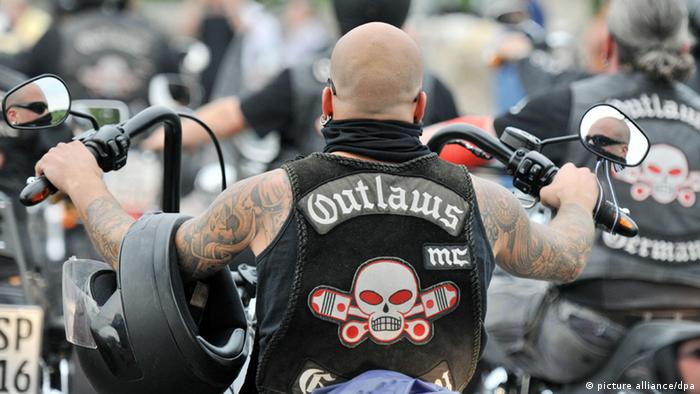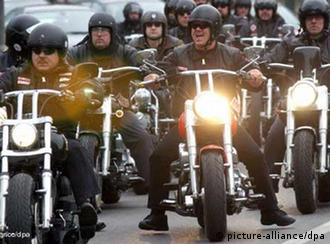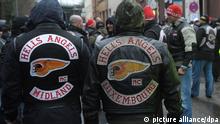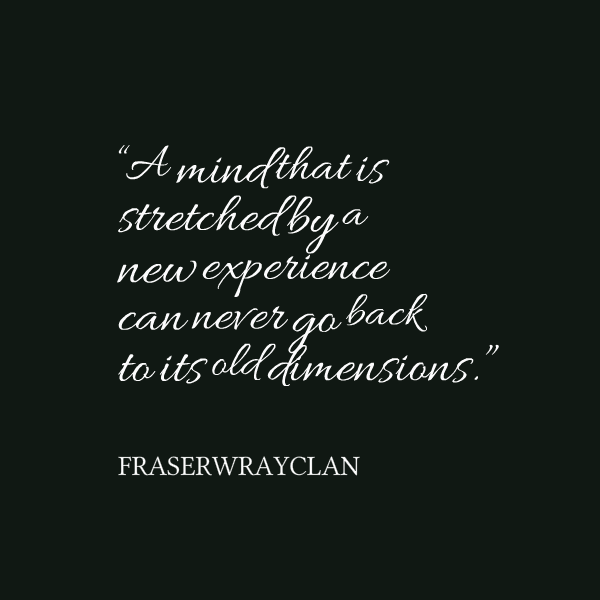THE men accused of being the key players in the Coffs Harbour chapter of the Lone Wolf Outlaw Motorcycle Gang are before the courts facing a raft of drug supply, violence and firearm charges. Fourteen gang members and associates, arrested by police under Strike Force Oriental have been publicly named. The men are facing almost 70 charges in the wake of their arrests during simultaneous dawn raids in Coffs Harbour, Coramba, Middle Boambee, Sawtell and Toormina on Wednesday, April 4. The men facing more serious charges have been remanded in custody while the accused are yet to enter pleas as police prepare their evidence against the men. Police allege the gang of bikies and their associates coordinated drug supply on the Coffs Coast and were behind a series of violent offences, including a home invasion in Cook Dr last September where three people were assaulted and one man was seriously injured. It's also alleged two of the men were found in possession of illegal handguns. During the raids police allegedly seized a .345 revolver and a semi-automatic 9mm pistol.
27 April 2012
There's been an upsurge in rival biker gang violence in Germany in recent years

Members of infamous biker gangs such as the Hells Angels, Outlaws and Bandidos are known for violent turf wars, terrorizing entire cities in Germany. The police are now cracking down on them.
Dressed in leather jackets and pants with studded belts, and sporting tatoos and menacing looks, some members of motorcycle gangs such as Hells Angels, Bandidos or Outlaws seem to enjoy their ferocious image. But now the German state of North-Rhine Westphalia (NRW) is ramping up the pressure on biker gangs.
On Thursday, the northwestern state's Interior Minister Ralf Jäger banned the "MC Bandidos Aachen" gang and five of its sub-groups. More than 600 police officers raided apartments and offices of the club and seized weapons, cash, computers and even a gadget for tapping police wireless.
The biker gangs have long been considered violent, and believed to have links to organized crime. Jäger said the police operation was carried out following tip-offs that the Bandidos "wanted to expand their criminal dominance" in the area in and around the city of Aachen.
Authorities say there is plenty of evidence to show the gangs are gaining strength. "Since mid-2005, the number of biker groups has almost doubled," said Thomas Jungbluth, head of the organized crime unit with NRW's criminal police agency.
The Bandidos alone registered 12 chapters in 2005, Jungbluth said, adding that today that number has grown to 25 chapters with 900 members.
Operating as big firms
Dirk Wilking, motorcycle gang expert at the Brandenburg Institute for Community Consultancy, said the groups operated as "large enterprises" across Germany and Europe. "They especially pursue economic interests and are largely active in the area of organized crime."

The gangs are usually linked to gambling, prostitution, arms dealing, extortion, money laundering and drug trafficking. The big international biker gangs are primarily involved in the drugs trade, including anabolic steroids. The latter, Wilking said, is a relatively new development. "These substances are supplied to fitness clubs, partly by biker gangs," he said.
The gangs constantly try to operate outside the borders of the European Union's Schengen zone, in countries on the edge of Europe where they can set up laboratories to prepare synthetic drugs. "Then they're out of reach of the EU and Europol," Wilking said.
Powerful symbols
The bikers' trademark include riding prestigious motorcycles such as Harley Davidson and sporting leather jackets with their clubs' insignia sown on the back. The Bandidos' patch bears a tubby Mexican wearing a large sombrero and carrying a machete in one hand and a pistol in the other. The Hells Angels' insignia is the "death's head" logo with wings.

Insignia is a crucial part of the biker gang culture
The insignia alone is full of powerful symbolism, Wilking said. "It plays a crucial role, because these groups offer a masculine image that hardly conforms to what's acceptable in society anymore: a proper macho, a real man. The law doesn't apply to me. I'm a biker."
That's the reason it's mostly working-class men who attracted to these gangs, Wilking said, even though at times even the occasional lawyer could be found in their ranks. "That's what makes these groups so attractive."
Blocking investigations
But prosecuting criminal bikers is far from easy. "Bikers usually maintain a wall of silence towards any investigations," Jungbluth said. "Even if a member is seriously injured, he will not give any tips that could lead to the perpetrator being caught."
Rather, bikers often make completely implausible statements to block the investigation or make it more difficult. There are hardly any bikers who leave the scene and if they do, they "have to reckon with harsh reprisals," Jungbluth added.
Founded in 1966 in San Antonio, Texas, the Bandidos have their roots in the US army. Their founder was a former Vietnam Marine veteran, Donald Eugene Chambers. His club was a refuge for soldiers who returned back to the US disappointed by the Vietnam war and sought a new home.
The motorcycle embodies the symbol of freedom linked with a strong sense of belonging to the group. The Hells Angels were formed in 1948 in California. After merging with further clubs, the gang expanded to Europe in the 1960s.
Bans are just a temporary solution
Biker expert Dirk Wilking says banning the groups, as was done in North-Rhine Westphalia, is a good approach. The gangs define themselves through their uniformity and their menacing appearance, so it's easy for them to spread an atmosphere of fear and intimidation. "That can only be broken with bans," Wilking said.
But the problem is that it's usually only local groups that are banned - as in the case of North-Rhine Westphalia.
"So you put a permanent ban one chapter of the gang, and then on another, but you don't get to the network of organized crime itself,” Wilking said. The local groups are only the local expression of an international phenomenon.
25 April 2012
Shooting a 'warning' from rival bikie gang
SIMMERING tension between rival bikie gangs exploded on the Gold Coast yesterday with the drive-by shooting of a tattoo parlour in the heart of Bandidos territory. Police fear the attack could be a push for territory by the Hells Angels as the outlaw gang seeks a toehold on the lucrative Glitter Strip. Less than 24 hours after police commissioner Bob Atkinson told the Bulletin that bikie gangs were "one of the greatest challenges to face law enforcement", the Bandido-protected Mermaid Beach tattoo shop was hit by at least four shots in the early hours of yesterday morning. High-ranking police yesterday said it was "inevitable" that the violence that has plagued Sydney would eventually spill across the border. "We do not believe it is directly connected to the war between the Hells Angels and the Nomads that has been unfolding in New South Wales," said police. "But it is a similar style of attack. "We know the Hells Angels have been pushing to establish a chapter on the Gold Coast -- that push is coming from Sydney. "Tradelink Drive is not their most profitable chapter." While detectives have attempted to play down the shooting, police say there is "no doubt" it was intended as a warning. The Bandidos are the largest and one of the most secretive bikie gangs on the Gold Coast. The club has gained strength as its main rival -- the Finks -- have been severely weakened with so many senior members behind bars and Bandido territory stretches south from Broadbeach. Police said last month's Hells Angels National Run was intended as a direct message to all gangs on the Gold Coast. More than 200 patched gang members descended on Surfers Paradise for the run. "These clubs are so well organised, they do nothing without a reason," police said. "You can bet they had some purpose in coming to the Gold Coast. "They taunted the Finks and nothing happened, now the Bandidos tattoo shop is shot up in the same way the gym controlled by the Hells Angels was hit a few months ago. "You join the dots." The shop is owned by a senior member of the outlaw gang who has been a patched member of the Bandidos "for years", police say. In an exclusive interview with the Bulletin, Mr Atkinson said the danger of bikie gangs was "under-rated" by the community. "The outlaw motorcycle gangs nationally present one of the greatest challenges to police. "I think the degree of that challenge and the risk they present to our society is underrated." The Gold Coast has one of the highest populations of bikie gangs in the country. Mr Atkinson said he would not be surprised if the Hells Angels were not considering a move closer to the Glitter Strip. "They are businesses, they look for opportunity so that wouldn't be a surprise," he said. "They market themselves as a group of mature men who have a love and interest in motorbikes and they do that very cleverly. The reality is they are highly sophisticated, well organised criminal enterprises that pose a genuine risk to the community and many are well represented by the finest and best lawyers who they retain to represent them." South East Region Assistant Commissioner Graham Rynders said the gangs were constantly looking to expand. "One of things about OMCGs is they look for opportunity for criminal enterprise," Mr Rynders said. "Throughout Queensland, throughout the country, probably throughout the world they are looking to expand. It is obviously dictated to by territory, depending on who or what other groups exist in what areas."
Jury hears grisly details about murder scene
Police discovered a grisly scene on Sept. 10, 2000, when they entered a Cogmagun Road home in Hants County. “It was a very brutal scene,” Cpl. Shawn Sweeney, who was a constable with the Windsor rural RCMP detachment that day, testified Tuesday in Nova Scotia Supreme Court in Kentville. It was the second day of trial for Leslie Douglas Greenwood, 42, who is charged with two counts of first-degree murder in connection with the deaths of Barry Kirk Mersereau, 48, and his wife, Nancy Paula Christensen, 47. Sweeney, a Crown witness, testified that he and four other police officers who responded to a 911 call found Christensen sitting upright in a chair in the living room of her Centre Burlington home with a bullet wound in her left cheek, under her glasses. She had a cup of tea in her hand and a small dog was sitting in her lap. There were several bullet casings and lead fragments scattered on the floor. Mersereau was lying face down, with pools of blood around his head and body. Another dog, believed to be a German shepherd-Rottweiler mix, was hiding under covers on the bed in the master bedroom. A third dog was tied to the front porch and another had run off into the woods. Sweeney told Chief Justice Joseph Kennedy and the seven-woman, five-man jury hearing the case that the house appeared to be neat and orderly, with no signs of struggle. “It didn’t appear to be a house that was rifled through or things thrown around,” Sweeney testified. Const. Glenn Bonvie told the court it was immediately obvious that Mersereau and Christensen were dead. “There was no movement. There was no doubt that they were deceased.” Crown witness Ronald Connors owned a hunting cabin in the woods about half a kilometre away from the couple’s house. He testifed that he heard several shots at about 8:15 p.m. on Sept. 9. Connors said he heard six shots fired in quick succession, followed by a pause and a couple more shots. Moments later, there were more shots. He said he thought at first someone might be jacking deer, but Connors concluded that the shots didn’t sound like those from a high-powered hunting rifle. The jury was shown a video of the two bodies as they were found. Former RCMP officer David Clace, then in charge of the RCMP’s forensics identification unit in New Minas, said a large amount of money was found in plastic bags in a gym bag in one of the bedroom closets. The bag was later determined to contain about $65,000 in cash. Crown attorney Peter Craig has told the court that the victims were shot to death in their home in an execution-style killing as part of a Hells Angels-ordered killing. “They were killed in their home in a quiet community, with a teapot on the stove, with no signs of struggle and their baby in the next room,” Craig told the jury. He said evidence presented by as many as 40 Crown witnesses will show that Michael Lawrence and Greenwood murdered the couple on the orders of Jeffrey Lynds, a former Hells Angels operative who died recently in a Montreal jail of an apparent suicide. Lawrence, who owed Lynds money, pleaded guilty last January to three charges of first-degree murder and was sentenced to life in prison with no possibility of parole for 25 years. Also killed that day, by Lawrence, was Charles Maddison, an innocent man who picked Lawrence up hitchhiking. Lawrence shot him to take his truck to commit a planned robbery. Craig said Lawrence, expected to be a crucial Crown witness, will testify that he and Greenwood shot the couple, one with a .357 Magnum, the other with a 32-calibre handgun, in what he called “planned and deliberate” killings. The couple’s 18-month-old baby boy was safely recovered from the house by neighbour Ruby McKenzie, who went to the victim’s home the day after the shootings. McKenzie said she brought the baby back to her mobile home and called police. Greenwood sat quietly during the proceedings, occasionally exchanging comments with his lawyer, Alain Begin. Begin is expected to argue that Greenwood went to the Mersereau house the day of the shootings to buy drugs, and that Lawrence shot the couple while Greenwood was waiting outside. Also charged with first-degree murder in the killings is Curtis Blair Lynds, 36, who is serving time in a federal prison for drug trafficking. A preliminary inquiry in his case is scheduled to begin July 16.





 14:48
14:48


